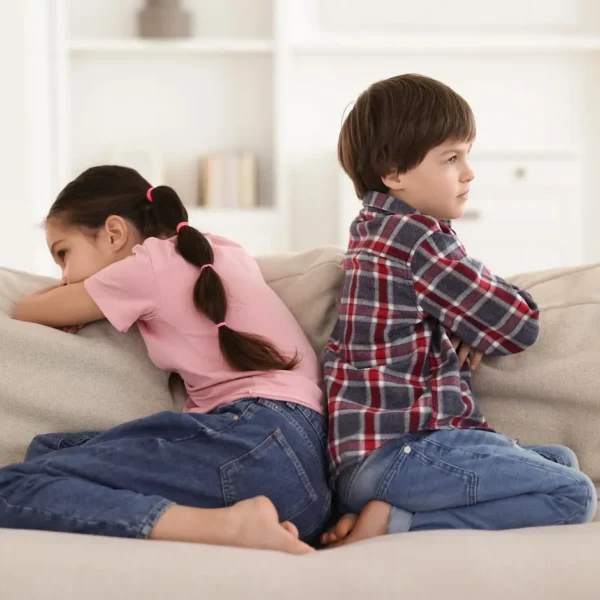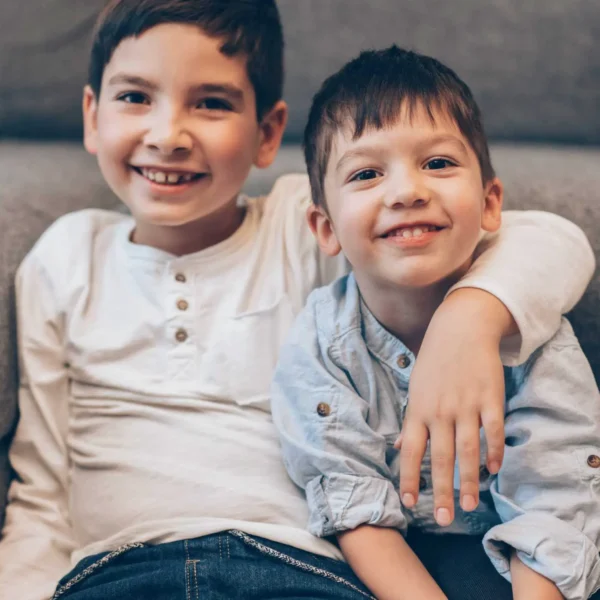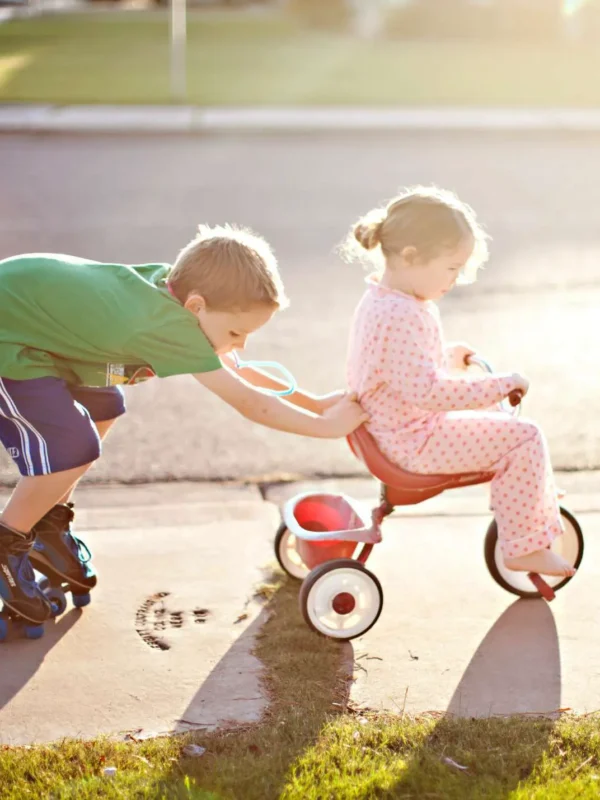
Have you been taught that your kids fighting equals failure? It doesn’t.
When your kids fight, I know how chaotic, triggering, and exhausting it can feel. It’s loud, it’s emotional, and it often escalates quickly, leaving you frazzled and overwhelmed. You might also start to question yourself: Why are they always fighting? What am I doing wrong? Will they ever get along?
Let me offer you a new perspective: Sibling fights are not a sign of bad behavior. They’re a normal part of human behavior.
Yes, there are times when conflict can cross a line and require your immediate attention, but the fact that your children argue? That they clash, yell, cry, compete?
That’s not a crisis. It’s actually an opportunity.
The First Big Shift: Fighting Is Normal (and Even Healthy)
Almost every close relationship includes some amount of conflict – romantic partners, coworkers, best friends. Siblings are no different. In fact, the sibling relationship is one of the first spaces where your child begins to explore what it means to relate to another person through both closeness and friction.
It’s where they begin to experiment with power, boundaries, fairness, identity, belonging and much more.
Fighting is how your children begin to develop a lot of the social and emotional life skills you want them to have, like:
-
- Direct communication: saying what they feel or want (even if imperfectly)
- Understanding needs: recognizing what they need in the moment and expressing it
- Boundary-setting: learning to say “No,” “Stop,” or “I don’t want to”
- Negotiation and compromise: taking turns, sharing, finding a middle ground, coming up with ideas
- Emotional regulation: managing disappointment, frustration, jealousy, and so on
- Self-awareness and empathy: understanding themselves and others better
These are life skills. Big, important, necessary, human skills we want to encourage. And your children are practicing them everyday inside their sibling dynamic, with your guidance.
This is why we actually don’t need to rush in and shut down every fight or assign blame too quickly. If we do, we may unintentionally rob our kids of the chance to build these skills.
The Reframe: Your Goal Isn’t to Stop the Fighting – It’s to Teach Them How to Fight Well
I’m often asked: “Okay, but what does fighting well even mean?”
Great question.
Fighting well doesn’t mean your children won’t get upset. It doesn’t mean everything stays calm. And it definitely doesn’t mean they’ll solve every problem with perfect logic and emotional poise.
What it does mean is that your children learn, over time and with your support, how to:
- Disagree with respect
- Express strong feelings without hurting others
- Share their needs without overpowering someone else’s
- Listen to a different perspective, even when they don’t agree
- Begin to solve problems together
- Reflect on a conflict to learn something new about themselves or their sibling
These are hard skills and they don’t appear overnight. But they can be learned, and you are the one who teaches them.
Not by controlling the outcome of every fight. But by shifting your role from referee to coach. From judge to mentor. From immediate problem-solver to skill-builder.
A Final Reminder
Your children’s fighting is not a sign that their relationship is broken or that you are doing something wrong. It’s a sign that they’re experimenting with the complexity of human relationships. That they’re learning and growing.
The real work of sibling conflict isn’t about stopping the storm; it’s about teaching them how to steer the ship.
And you’re not alone in that work, I’m here to help guide you every step of the way.
 The 5 Principles That Will Change How You Handle Sibling Conflict
The 5 Principles That Will Change How You Handle Sibling Conflict How to Not Take Sides When Siblings Fight: A Guide for Parents
How to Not Take Sides When Siblings Fight: A Guide for Parents



